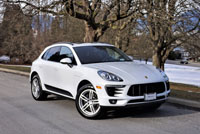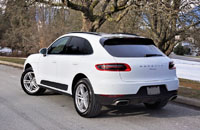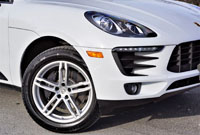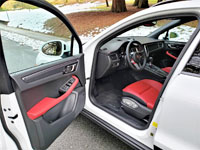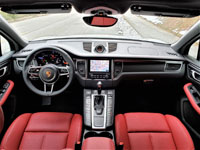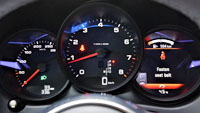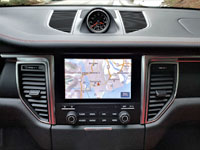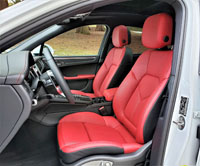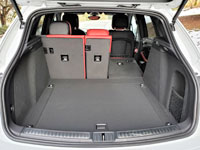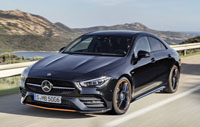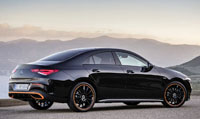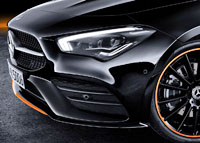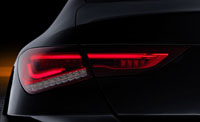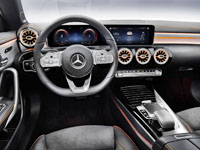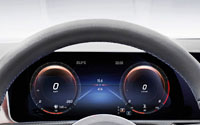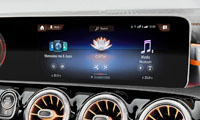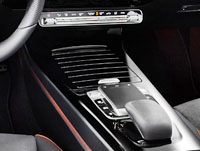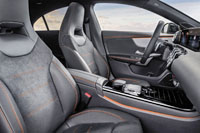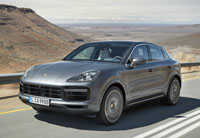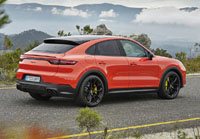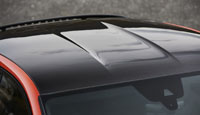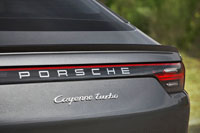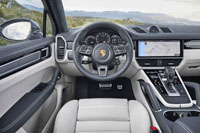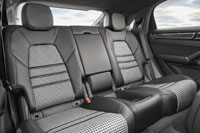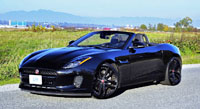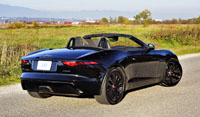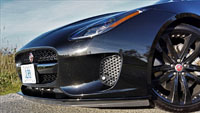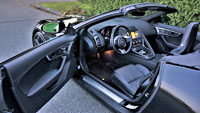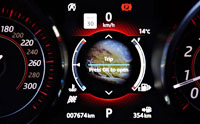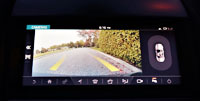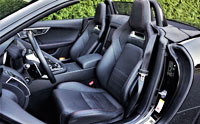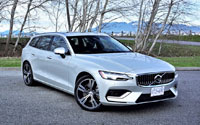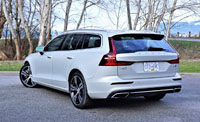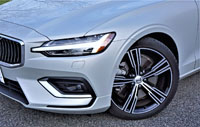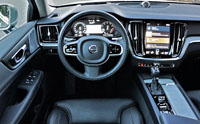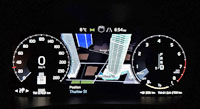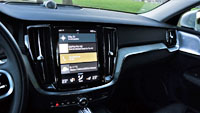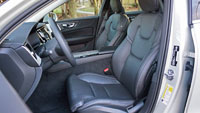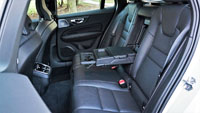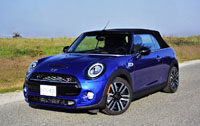
Some brands are so small they don’t really get the press they deserve, and Mini fits into that mould both figuratively and literally.
Ok, I just had a little fun with a small play on words. The just-used term “literally” was straight-forward, in that Mini’s lineup of cars and its single crossover are made up of subcompacts and compacts (they’re small), while the word figuratively should actually be used as a substitute for metaphorically, but instead I improperly chose it for its root word “figure” in order suggest that Mini’s sales figures reside on the smaller side of the scale as well (they only delivered 4,466 3-Door Hatch, 5-Door Hatch, Convertible and Clubman models last year). Clever? Not really. Grasping at straws for a witty opener? Guilty as charged.
In reality, however, I almost completely forget Mini exists as a brand until checking my schedule on a given Sunday evening, at which point I’m reminded that one of their cars will be in my weeklong possession starting the following day. That’s when I get giddy with excitement and start planning my week to make sure I have time to drive somewhere unpopulated on the side of a body of water (ocean, lake or river), a mountain, or anywhere else with ribbons of winding black asphalt.
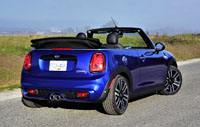
Truly, their cars are so much fun they’re addictive, especially when the model loaned out is tuned to “S” specification or better, and has its hardtop replaced by a slick power-operated retractable cloth top. Such is the car before you, the 2019 Mini Cooper S Convertible, which is upgraded further with this year’s special $2,900 Starlight Blue Edition Package, meaning that it receives a special coat of stunning Starlight Blue Metallic paint, as well as unique 17-inch machine-finished Rail Spoke alloys featuring black painted pockets on 205/45 all-season runflat rubber, piano Black Line exterior trim replacing most of the chrome, including the front grille surround plus headlamp, taillight and outside mirror surrounds, etcetera.
The “more” that I just noted includes rain-sensing automatic on/off LED headlights with active cornering, LED fog lamps, piano black lacquered interior detailing, a two-zone auto HVAC system, an accurate Connected Navigation Plus GPS routing system housed within Mini’s already superb infotainment system, a wonderful sounding Harman Kardon audio system, Sirius/XM satellite radio, stylish Carbon Black leatherette upholstery, and heated front seat cushions, while my test model’s only standalone option was a $1,400 six-speed automatic transmission, with all of the above upping the Mini Cooper S Convertible base price of $33,990 to $38,290, plus a destination charge and additional fees.
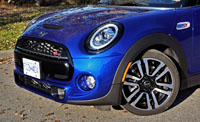
To be clear, you can purchase the new 2019 Mini Cooper Convertible (sans S) for as little as $29,640 before any discount, or you can spend the slightly pricier amount noted above for my tester’s sportier and more feature-filled “S” trim. Alternatively, you could choose a base 3-Door Hatch (hardtop) for as little as $23,090, while other models in the Mini lineup include the Cooper 5-Door available from $24,390, a six-door Clubman that starts at $28,690, and the Countryman crossover that can be had for as little as $31,090, plus destination charges of course.
Incidentally, all 2019 Mini prices, including trims, options and standalone features, were sourced right here on CarCostCanada, where you can also get otherwise difficult to find manufacturer rebate info, plus dealer invoice pricing that could save you thousands.
Before I share what makes this Cooper S Convertible and all Minis so enjoyable to live with, I need to focus on the quality of the Mini product overall. Mini’s acceptance as a premium brand is questionable, which makes sense when you can buy one for a mere $23k, but nevertheless quality of materials, fit and finish and features found in each Mini model is much better than average when comparing most subcompact and compact rivals, especially when discussing mainstream brands.
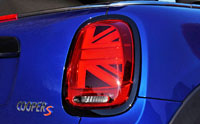
Just the same, the majority of high-volume compact models have been on a refinement trend as of late, with the most-recent Mazda3 getting closest to premium status without raising its pricing into the stratosphere, but like its compact sedan and hatchback competitors (such as the Honda Civic, Toyota Corolla, Hyundai Elantra, et al) the 3 is quite a bit larger than all Mini models this side of the Clubman and Countryman, and therefore when comparing a regular Cooper to any top-selling mainstream subcompact rival (like a Hyundai Accent, Honda Fit or Toyota Yaris), the Mini’s finishing and performance is on a much higher scale.
The Cooper S Convertible before you, for example, is very well made, from its outer fit to its inner detailing. The paint finish is excellent and other exterior embellishments impressive, from my tester’s eye-catching LED headlamps and Union Jack-emblazoned taillights, to its nicely crafted leather-clad steering wheel and stitched leather-wrapped shift knob, as well as its primary instrument pods hovering overtop the steering column, the ever-changing circle of colour lights rounding the high-definition 8.8-inch infotainment display, the row of brightly chromed toggles and red ignition switch in the middle of the centre stack, and the similarly retrospective line of toggles overhead, it’s a car that completely separates itself from everything else on the market. Those who love retro-cool designs and brilliantly artistic attention to detail will adore today’s Minis.
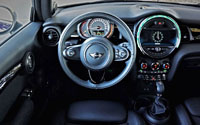
As grand as everything about this car sounds so far, the Mini Cooper S Convertible is at its best when in its element, on the road—prefe¬rably a winding road. S trimmed Coopers begin with a sonorously high-revving 16-valve twin-scroll turbocharged 2.0-litre four-cylinder engine capable of 189 horsepower and 207 lb-ft of torque, which is a sizeable 55 hp and 45 lb-ft more than the base Cooper’s 1.5-litre three-cylinder turbocharged powerplant. This allows the S to slice 1.6 seconds off of the base model’s 0 to 100km/h acceleration time, dropping it from 8.8 to 7.2 seconds with the manual, or from 8.7 to 7.1 with my tester’s six-speed automatic transmission.
If more speed is still required you can ante up for the John Cooper Works Convertible, which reduces its zero to 100km/h time down to 6.5 seconds by way of a more formidable 228 horsepower version of the 2.0-litre TwinPower Turbo four-cylinder engine, featuring a much more robust 236 lb-ft of torque. It starts much higher up the affordability ladder at $41,490, yet thanks to sport suspension improvements that include larger wheels and tires, plus more standard styling, luxury and convenience upgrades, most Mini fans will find it well worth the price of entry.
Then again, even the mighty John Cooper Works won’t cause Honda Civic Type R drivers to quiver from fear in their form-fitting Recaro racing seats, but lower the roof and drop the clutch of a JCW or this Cooper S Convertible and you’ll quickly be enjoying your drive much more than you might expect, while never worrying about draining the bank account at the pump.
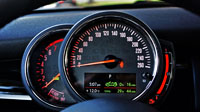
Mini claims a very reasonable fuel economy rating of 10.2 L/100km city, 7.4 highway and 9.0 combined with the manual, or 9.4, 7.2 and 8.4 respectively with the automatic when upgraded to S trim, while the base Cooper Convertible manages a mere 8.4 L/100km in the city, 6.3 on the highway and 7.5 combined with its manual, or 8.8, 6.8 and 7.9 respectively with its autobox.
Together with the performance upgrade, going from base to Cooper S adds some performance-focused items like default “MID”, “GREEN” and “SPORT” driver-selectable modes, the latter perfect for boosting takeoff and enhancing responsiveness all-round, while Mini also provides this trim with sportier front seats featuring heated cushions. And just in case going topless isn’t your thing, hardtop Cooper S trims receive a big panoramic sunroof as standard equipment.
That just-noted Sport mode does a great job of increasing the Cooper S Convertible’s get-up-and-go while enhancing the quick-shifting nature of its transmission, while take note that its front-wheel drive system is never overpowered from torque steer, even when pounding on the throttle from an angled standing start. Those who read me often will know that I’d rather have any Mini with the brand’s wonderfully notchy manual gearbox, but nevertheless this automatic delivered strong performance while its manual mode, despite only being swappable via the gear lever, is plenty responsive.
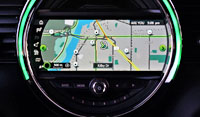
Yes, that means it has no steering wheel mounted paddles, which is strange for this sportier S model. The current JCW autobox doesn’t come with paddle-shifters either, but reportedly Mini will rectify this shortcoming in 2020 with respect to the Clubman and Countryman JCW models, which are said to be fitted with a new eight-speed auto and much quicker 301-hp 2.0-litre engine making 331 lb-ft of torque, so it’s possible that in time we’ll see paddles on lesser trims as well. As it is, I left the autobox to its own devices more often than not, being that it shifts smoothly and was therefore ideal for congested city streets. Still, when the road opened up and consecutive curves arrived I found that manual mode significantly increased the fun factor, while helping to increase control.
Just like with all Minis, the Cooper S Convertible comes standard with a brilliantly sorted fully independent front strut and multi-link rear suspension setup that can humble most front-drive rivals, other than those enjoying the aforementioned Civic Type R. Still, it slices and dices up serpentine tarmac like it’s some sort of front-drive BMW, jest intended.
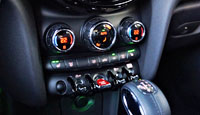
Those in the know (yes, we car nerds) will already be aware that second-generation Minis share UKL platform underpinnings with some modern-day BMWs. To be clear, however, the UKL platform is divided into UKL1 and UKL2 architectures, the former only used for Minis thus far (including the 3- and 5-door F56 Hatch plus this F57 Convertible), and the latter for larger Minis (the F54 Clubman and F60 Countryman) as well as the global-market BMW 1 Series Sedan (F52), 1 Series 5-door hatch (F40), 2 Series Active Tourer (F45), 2 Series Gran Tourer (F46), X1 crossover SUV (F48), X2 crossover coupe (F39) and Brilliance-BMW Zinoro 60H (a Chinese-market X1/F48 crossover with unique sheetmetal).
We don’t have the 1 Series or 2 Series Active Tourer here in Canada, and so far I haven’t been able to get behind the wheel of these two while parked in my second Manila, Philippines home, so I can’t say anything useful about their driving dynamics compared to counterparts from Mini, but I truly don’t believe they could be much better than a Cooper 3- or 5-Door Hatch or Clubman. I can attest to the Countryman S and the new Countryman S E ALL4 plug-in hybrid being more planted at high speeds than the latest BMW X1 xDrive28i, however, the latter seeming to have been designed as more of a comfort-oriented, practical alternative.
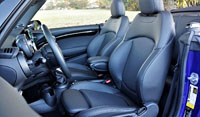
The Cooper S Convertible, on the other hand, is hardly as big and accommodating inside or out, its rear passenger area and luggage compartment actually the tightest in the entire Mini line. The back seats are probably best used for smaller adults and/or children, whereas the trunk measures 160 litres when the divider is moved lower and top is down, or 215 litres with the top up and moveable divider raised. It’s only accessible through a smallish opening too, but on the positive loading is assisted thanks to a really useful wagon-style folding tailgate that provides a temporary shelf for placing cargo before shifting it inside, while you can expand on cargo capability via 50/50 split-folding rear seatbacks when hauling longer cargo such as skis or snowboards is required. All in all, the Cooper Convertible’s passenger/cargo capability is fairly flexible when put up against most rival ragtops, especially similarly priced roadsters like the Mazda MX-5 or Fiat 124 Spider.
Of note, Mini’s cloth top is a very well insulated “3-in-1” design that’s truly quiet, not to mention capable of retracting or closing in just 18 seconds via an almost completely automated process (you just need to keep holding the overhead toggle switch). When opening, it first stops halfway to form a big sunroof, which is perfect for those times when totally dropping the top isn’t ideal. Pressing and holding it again causes the roof to completely retract, while repeating the same two-step process in reverse powers the top upwards. The convertible can be opened or closed while driving up to 30 km/h, so don’t worry about how much time you have while waiting at a stoplight. Additionally you can open or close the roof from your key fob while outside, handy if you left the interior exposed in your driveway when it unexpectedly starts to rain.
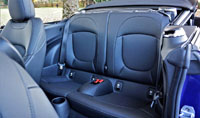
The Cooper S Convertible isn’t without competition, the soon to be discontinued Volkswagen Beetle Convertible and cute little Fiat 500 Cabrio (which is available in sporty Abarth trim) being the closest four-seat rivals, but most would agree that the car on this page offers more luxury and performance than either European challenger.
In short, Mini’s drop-top is a comparatively roomy four-place convertible with decent stowage, premium-like interior refinements, excellent onboard electronics, agreeable fuel-efficiency, and a fun-to-drive personality that’s hard to beat, all for a competitive price when adding up all its positive attributes. Those who simply want to own a really well made car that’s an absolute blast to drive each and every day will likely love the Mini Cooper S Convertible.
Story credit: Trevor Hofmann
Photo credit: Karen Tuggay

